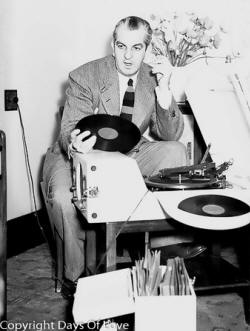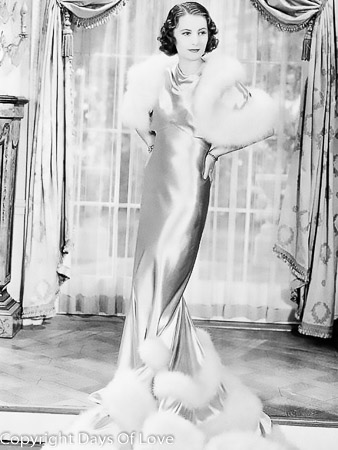

Partner Milton Owen, Robert Roberts
Queer Places:
Forest Lawn Memorial-Parks & Mortuaries, 6300 Forest Lawn Dr, Los Angeles, CA 90068, Stati Uniti
 Orry-Kelly was the professional name of Orry George Kelly (31
December 1897 – 27 February 1964), an Australian-American
Hollywood
costume designer. Until being overtaken by
Catherine Martin in 2014, he was Australia's most prolific
Oscar winner, having won three
Academy Awards for Best Costume Design.[1]
Orry-Kelly was the professional name of Orry George Kelly (31
December 1897 – 27 February 1964), an Australian-American
Hollywood
costume designer. Until being overtaken by
Catherine Martin in 2014, he was Australia's most prolific
Oscar winner, having won three
Academy Awards for Best Costume Design.[1]
Orry-Kelly was born George Kelly in Kiama, New South Wales, Australia, and was known as Jack Kelly. His father William Kelly was born on the Isle of Man and was a gentleman tailor in Kiama. Orry was a name of an ancient king of the Isle of Man. Orry-Kelly was sent to Sydney at age 17 to study banking, and there he developed his interest in theatre.[2]
Orry-Kelly journeyed to London and then to New York to pursue an acting career. When his father fell ill, he returned to Australia, where he opened a clothes shop in Sydney. After his father's death, he returned to New York.
By 1921 he was working as a tailor's assistant in the garment district, selling hand painted neckties as a sideline. It was about this time that he met a 17 years old vaudeville acrobat by the name of Archie Leach (later Cary Grant). Within a few months they were sharing a Greenwich Village loft, just behind the present site of the Cherry Lane Theater. Their third roommate was Charlie Phelps, who, as Charlie Spangles, played in drag at the Metropole Club.
Archie Leach and Orry-Kelly lived together, on and off, for the next nine years, until Archie left for Hollywood in January 1932. Orry would tell friends that they were lovers for some of that time. Orry's press of the 1930s and 1940s rarely mentions his friendship with Grant, and never revealed that they'd lived together in New York City. Only in the 1960s did Orry allow himself to admit the connection. At a showing of his paintings in New York, Orry included in his artist biography the fact that young Archie Leach once helped him paint "lecherous frogs" on murals in Greenwich Village speakeasies.

A job painting murals in a nightclub led to his employment by Fox East Coast studios illustrating titles. He designed costumes and sets for Broadway's Shubert Revues and George White's Scandals. When he moved to California, he lived with Milton Owen, a former stage manager, a relationship that was acknowledged also by Kelly's mother.
After moving to Hollywood in 1932, Orry-Kelly was hired by Warner Bros. as their chief costume designer and he remained there until 1944. Orry owned Cary Grant his break, for Grant had put him in touch with the agent Minna Wallis, who showed to Warner Bros. sketches of gowns he'd designed for Ethel Barrymore on Broadway. The studio liked his designs enough to hire Orry for Ruth Chatterton's The Rich Are Always With Us (1932). Within a year, he was head of the wardrobe department.
With Adrian and Travis Banton, Orry-Kelly formed the fashion triumvirate of the 1930s and early 1940s. But whereas the other two were known for extravagance and high style, Orry designed far more simply, as befit the more workaday, down-to-earth Warner Bros. "The general tone of the studio was set by Kelly," observed fashion historian David Chierichetti, "utter simplicity and high fashion without theatricality." His no-frills approach worked perfectly for the queen of the lot, Bette Davis, on whom the more elaborate designs of an Adrian or Banton would have looked absurd.
Orry-Kelly served with the United States Army Air Corps during World War II until being discharged for alcohol problems.[3][4]
His drinking was also the reason Warner Bros. eventually let him go, giving more responsability to the younger and less temperamental Milo Anderson. Still, Orry would remain close with Anne Warner, Jack's wife, and through her graces would return to the studio on a freelance basis.
While filming Arsenic and Old Lace in 1944, the only film of Cary Grant's for which Orry did the costumes, costar Priscilla Lane observed the two as decidedly unfriendly. George James Hopkins, who new Orry well, recalled in his memoirs a possible reason for that unfriendliness. "Although Orry hadn't seen Grant in years," Hopkins wrote, "he still considered him his friend." But that first day on the set, a radio game show had brought one of its winners for a tour. On the show's limousine was painted the title: Queen for a day. Spotting it, Grant turned to Orry and quipped: "Your limousine is waiting outside." Orry, who could apparently dish out better than he could take it, was infuriated. Hopkins wrote, "He resented the insinuation from a man many considered a deadbeat."
Later, his designs were also seen in films at Universal, RKO, 20th Century Fox, and MGM studios. He won three Academy Awards for Best Costume Design (for An American in Paris, Cole Porter's Les Girls, and Some Like It Hot) and was nominated for a fourth (for Gypsy).
John Colton, author of "Rain," had been in Hollywood since the early 1920s, where he became a close friend of Irving Thalberg. A vital part of the Hollywood gay scene, Colton share a home with Mercedes de Acosta and often turned up in the gossip columns "out on the town" with George Cukor or Orry-Kelly. Under the heading "So We're the Same, Are We?" (reflecting the post-Code admonition that the stars were just plain folks), Lloyd Pantages recounted in Photoplay a drag act Colton performed at Orry-Kelly's, done up in a flowered robe and roses in his hair, imitating Sarah Bernhardt and Mrs. Leslie Carter. There was also Edgar Allan Woolf, whom MGM story editor Samuel Marx described as "a wild red-headed homosexual." Woolf was was a platwright before coming to Hollywood, where he wrote such films as The Mask of Fu Manchu and Freaks (both 1932), as well as serving as one of the three credited writers on The Wizard of Oz.
Orry-Kelly worked on many films now considered classics, including 42nd Street, The Maltese Falcon, Casablanca, Arsenic and Old Lace, Harvey, Oklahoma!, Auntie Mame, and Some Like It Hot. He designed for all the great actresses of the day, including Bette Davis, Kay Francis, Olivia de Havilland, Katharine Hepburn, Dolores del Río, Ava Gardner, Ann Sheridan, Barbara Stanwyck, and Merle Oberon.
In 1951, Walter Plunkett shared an Oscar with Orry-Kelly and Irene Sharaff for An American in Paris. Satch LaValley would remember Walter uncharacteristically grumbling, "I can't believe I have to share one-third of this damn Oscar with that son-of-a-bitch Orry-Kelly." As edgy as Plunkett was easygoing, Orry was opinionated, headstrong alcoholic who could dissolve his friends into laughter and shoot down his foes with one well-timed barb. "Orry-Kelly was completely unpredictable," said his friend Robert Shaw. "One minute he was sweet and kind, making you laugh. The next he was sharpening his claws against you." The difference in style among designers can be best seen in An American in Paris. Irene Sharaff's costumes in the long ballet sequence are loud, vibrant, in many shapes and colors. Walter Plunkett's designs for the Beaux Art ball are over the top, with capes and diamond shapes everywhere. But the rest of the film, designed by Orry-Kelly, is a marvel of simple, elegant lines. Nina Foch's one-shoulder-bared, strapless white gown is stunning.
Orry-Kelly was known for his ability to "design for distraction" to compensate for difficult figure shapes.[5] He also had the job of creating clothes for the cross-dressing characters played by Tony Curtis and Jack Lemmon in Some Like It Hot (1959). His skill is shown by the fact that while Some Like It Hot was in production, Curtis and Lemmon would go into the ladies' room after eating lunch without being spotted as men.[6] He wrote that when he finished draping Dolores del Río in white jersey, "she became a Greek goddess ... she was incredibly beautiful".[2] The elegant clothes he designed for Bergman's character in Casablanca have been described as "pitch perfect".[2]
In addition to designing, Kelly wrote a column, "Hollywood Fashion Parade", for the International News Service, owned by William Randolph Hearst, during the years of World War II. Kelly's memoirs, entitled Women I've Undressed were discovered in the care of a relative, as a result of publicity surrounding Gillian Armstrong's 2015 documentary on Kelly, Women He's Undressed.[7][8] The memoir was published for the first time in 2015.[9]
Although he'd win Oscars for An American in Paris, Les Girls, and Some Like It Hot, his influence as a designer had waned. In one of Hedda Hopper's columns, he sniped at Don Loper, designer and choreographer: "And M'Lord Don Loper, Guess what my fish came wrapped in the other day? Your article on fashion decor, ancestry, freak outfits, good manners and taste." In 1961, he pounced on Noel Coward when the famed with suggested America still suffered from "war guilt." In an open letter to The Hollywood Reporter, Orry boasted of wearing a private's uniform in the US Army and suggested it was time America began resenting Coward's "dated behaviour."
Later in life, Orry turned to painting when film jobs dried up: Kelly's landscapes and city blocks were judged very highly by critics.
A longtime alcoholic, Orry-Kelly died of liver cancer in Hollywood and was interred in the Forest Lawn Memorial Park, Hollywood Hills. His pallbearers included Cary Grant, Tony Curtis, Billy Wilder and George Cukor and his eulogy was read by Jack L. Warner. He had no living relatives when he died so his personal effects and Academy Awards were stored by Ann Warner, wife of his friend, Jack.[1] The Oscars were among the items at them exhibition entitled Orry-Kelly: Dressing Hollywood, in the Australian Centre for the Moving Image in August 2015.[1] Friends recall that for several years in the 1940s and 1950s Orry-Kelly had a boyfriend named "Bob", possibly Robert Roberts, who would serve as a honorary pallbearer at Orry's funeral. In his will, Orry referenced an earlier document, where the bulk of his estate was left to "my partner R.E. Roberts, who is now most successful and is no longer my partner." The relationship with Bob did not endure: Orry was very much alone at the end, with only Ann Warner at his bedside.
My published books: